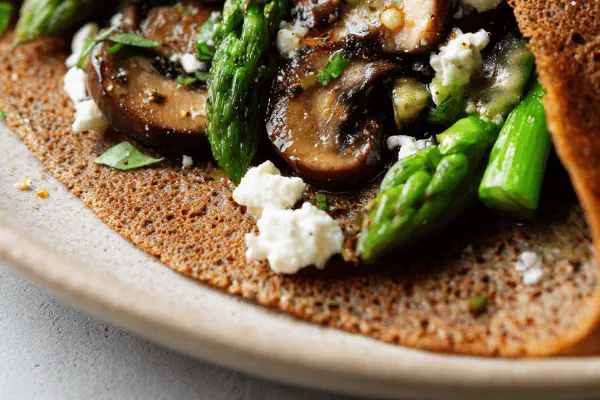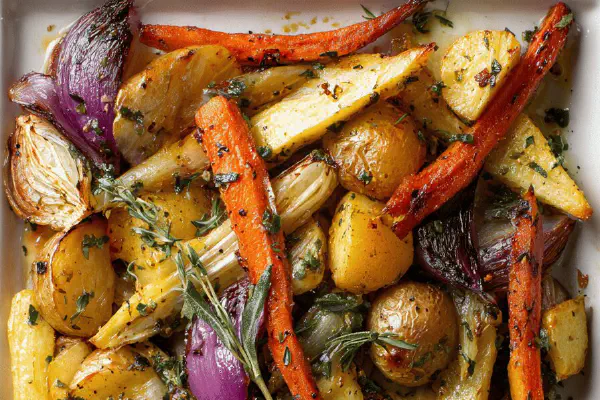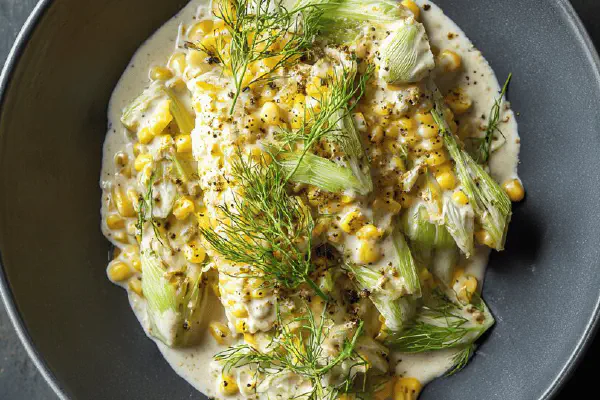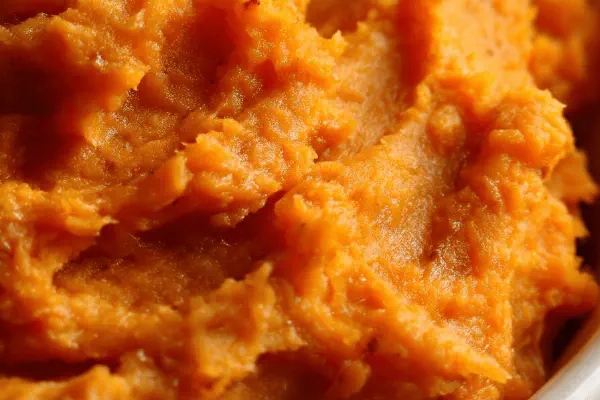Featured Recipe
Asparagus Gochujang Glaze
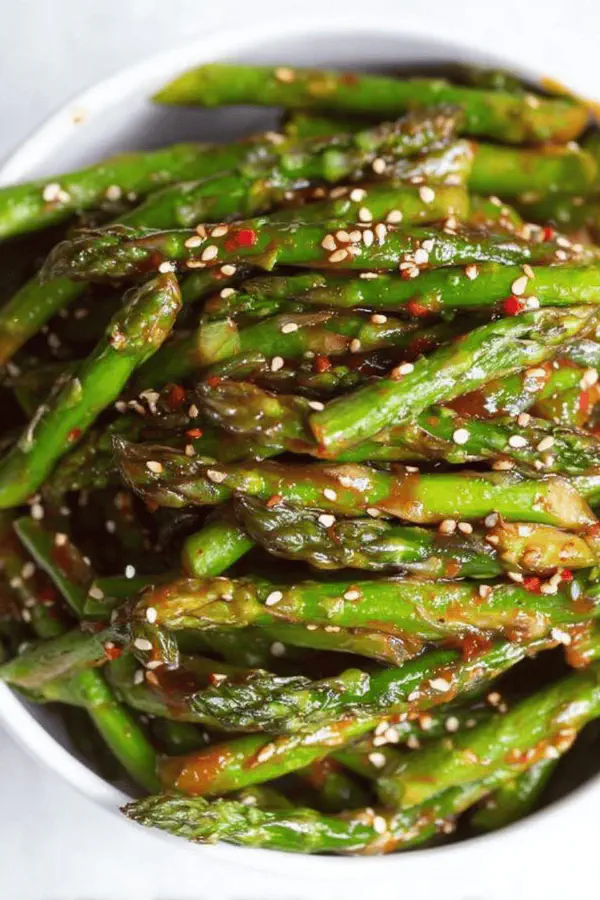
By Kate
"
Tender asparagus blanched till just crisp-tender then tossed in a spicy-sweet glaze reworked with smoky chipotle and honey. Quick boil followed by ice bath to lock in vibrant color and snap. Glaze hit with tamari instead of soy for richer umami, toasted pecans swapped for sesame seeds adding crunch complexity. Adjustable cook times by checking spears—pierce to gauge doneness rather than clock. Every step cuts down on soggy stalks or dull flavor. Perfect balance of heat, sweet, and texture. A sharp twist on traditional spicy sides for real kitchen warriors.
"
Prep:
10 min
Cook:
4 min
Total:
14 min
Serves:
6 servings
asparagus
Korean
vegetarian
gluten-free
Introduction
Asparagus with heat that bites but never overwhelms. Blanched, shocked, then nudged into a glaze that marries smoky chipotle with the sweet warmth of honey and the savory snap of tamari. Tossed and dressed just before serving—never sitting too long or it wilts. A side that wakes up tired plates and offers textural contrast. Gochujang’s fiery depth softened and rounded by honey, then elevated with nutty pecans that crunch against tender asparagus. Watch the boiling water bubble with readiness. Mastery lies in timing; texture tells all here: too soft, and you lose structure; too hard, and you miss flavor infusion. It takes intuition more than timers. I swap sesame seeds for chopped pecans to add a smoky char note, unexpected but grounding. Not everyone has gochujang stashed, no problem—blend sriracha with a touch of miso as a stand-in but reduce salt to prevent overshoot. This glaze avoids monotonous heat and keeps every bite intriguing. Always boil asparagus in plenty of salty water; the seasoning anchors the stalk, invisible but impactful. Clean cooking and crisp finishes save the day when haste threatens flavor. The trick: shock the stalks cold immediately after cooking or color dulls and texture degrades. Toss gently so glaze clings but stalks stay whole—rip or bruise and it’s downhill for presentation and mouthfeel. Toss with confidence. Flavor hits mid-tongue with citrus sharpness and trailing sweet heat. Toasted pecans add an earthy crunch and subtle bitterness just when your palate starts to settle. Simple steps. Elevated outcome.
Ingredients
About the ingredients
Asparagus should be fresh—bright green tips, firm stems, no limpness. Tough ends trimmed to prevent stringy bites. Go for spears uniform thickness to ensure even cooking. Substitute chipotle chili powder for a smoky complexity that plays well against honey’s sweetness—balances the usual straight heat. You can swap out honey for maple syrup with a mild flavor shift—skip if vegan and use agave instead. Tamari preferred for gluten-free option and richer umami, but regular soy sauce works if adjusted for saltiness. Apple cider vinegar cuts the glaze’s sweetness with a subtle tang; white vinegar would overpower. Toast pecans dry in a skillet—watch closely; nuts burn fast. Alternative crunchy elements: toasted pumpkin seeds, crushed peanuts, even fried shallots for an umami crunch. Garlic minced finely to avoid raw harshness. Sesame oil added last for aroma, not cooking, so it stays fragrant. Avoid sesame seeds for this version, choosing pecans instead, but if you prefer sesame, lightly toast until fragrant before sprinkling. Prep glaze while asparagus is cooking for efficiency. Keep glaze chilled if making ahead, stir again before tossing.
Method
Technique Tips
This method hinges on controlling asparagus texture and blistering glaze just enough to meld flavors. Boiling water should be roaring before asparagus hits—too cool and it turns flexible but pale. Asparagus that refuses to bend slightly is undercooked—keep testing by feel. Shock in ice water immediately—this is non-negotiable, it resets asparagus’ internal chemistry, stops cooking dead in tracks. Dry well before glazing to allow external sauce adhesion—if water remains, glaze slips off, leaving bland spots. Medium bowl for glaze—easy whisking and clean up. Chipotle powder added here to control smoky heat instead of post-toss—ensures flavor integration. Toss gently in warm pot off direct heat; residual warmth helps glaze adhere. Avoid hot pots that cook asparagus further or cool bowls that make the glaze greasy and stubborn. Final texture is critical—too soft and asparagus becomes juicy rather than crisp-snap. If glaze seems thick or sticky, add slight splash water or vinegar to loosen but don’t dilute flavor. Toasting pecans releases oils, enriches flavor, and adds crunch contrast; raw nuts feel dull. Pecan substitute options impact texture/flavor slightly but maintain crunch, essential for contrast. Serve immediately—glaze firms as it cools and pecans soften. If making ahead, keep glaze and asparagus separate until moments before serving, rewarm gently if needed. Avoid reheating raw garlic glaze; off-flavors develop fast.
Chef's Notes
- 💡 Blanching crucial. Salt like sea; flavor permeates. Use ice bath. Color stays bright. No limpness allowed. Texture needs gentle bite; overcooked tastes bad.
- 💡 Monitor cooking closely. Test thickest spear with fork. Heat should be high for quick blanch. Watch ice bath—reset asparagus immediately. No time loss.
- 💡 If spice too much, reduce chipotle. Or add sweetener. Maybe try sriracha with miso. But adjust salt. Gochujang aroma is key. Don't let it sit.
- 💡 Pecans bring crunch but can swap. Think dry toast pumpkin seeds. Or crushed peanuts if needed. Texture matters; skip soft toppings. Crisp is best.
- 💡 Serve immediately. Glaze firms; pecans soften. Keep glaze separate if prepping ahead. Rewarm gently. Avoid reheating garlic sauce. Flavors go off.
Kitchen Wisdom
How long to cook asparagus?
Test by piercing; should resist softly. Watch timing. Overcooked means mushy. Needs quick blanch followed by shock.
Can I make this dish ahead?
Sure, but keep glaze and asparagus apart. Rewarm without cooking garlic again; can make flavors harsh. Timing key.
What if I don’t have gochujang?
Use sriracha with miso for close flavor. Adjust salt in sauce for balance. Gochujang unique but alternatives work.
How to store leftovers?
Refrigerate in airtight container. Use within 2-3 days. Reheat gently but don’t cook garlic again. Overcooked garlic off-flavors.
